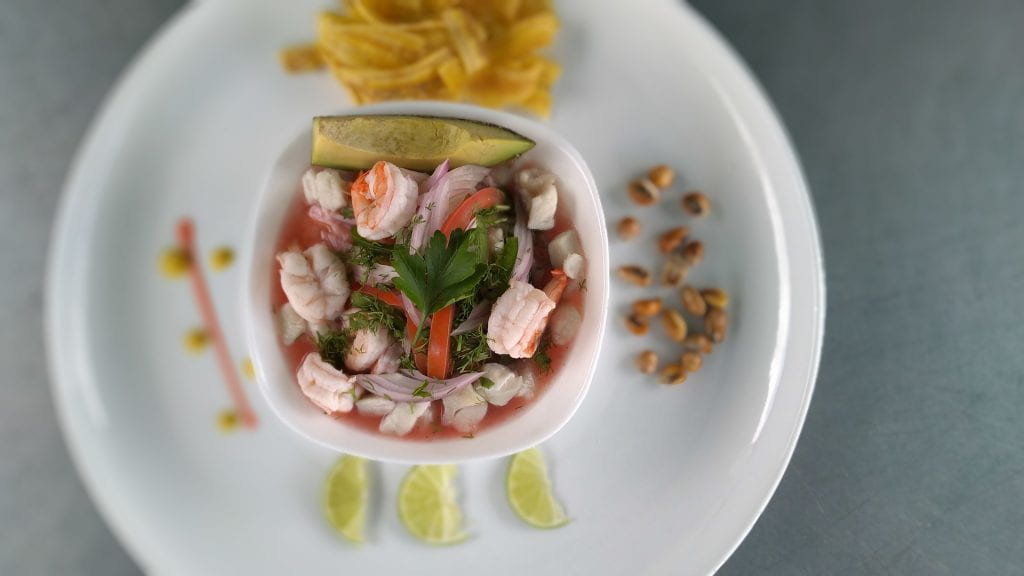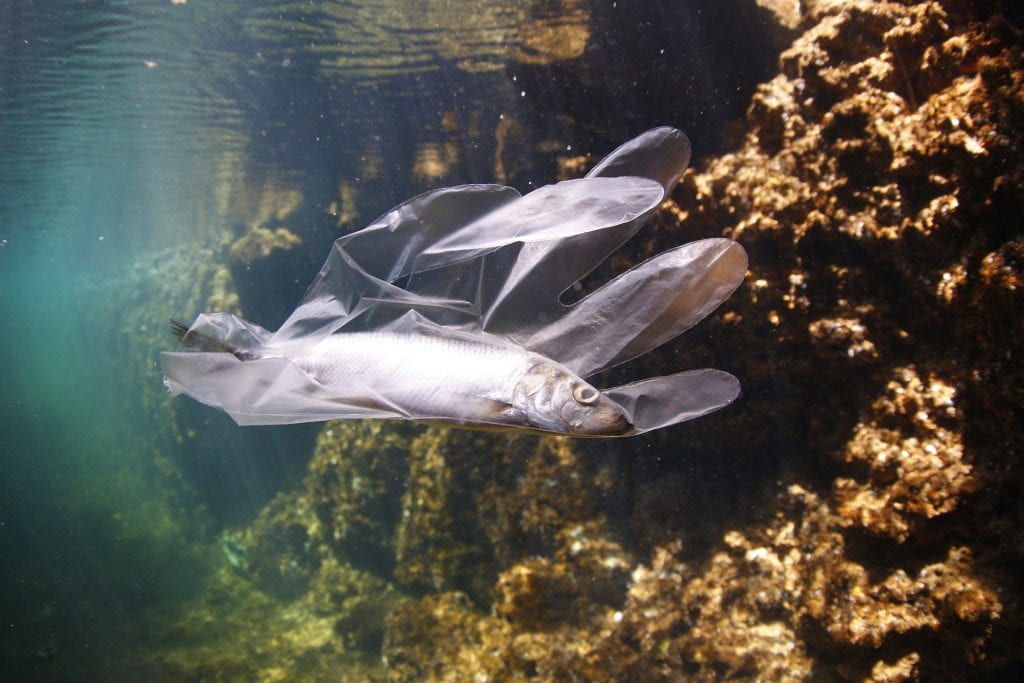“Lima is a place embroidered by migration”.
I studied in the school of Bellas Artes in Lima, specialising in oil painting which I always loved. But, for me it was always more accessible to pursue print making, as one can really start from zero with basic materials and make a great piece of art.
With time other techniques took my interest, like working with the traditional art of my country. This really affected me a lot, this ability to draw upon the knowledge of traditional masters. It can result in such rich work because it makes me feel closer to my territory, and country and identity…it gives more power to the work.
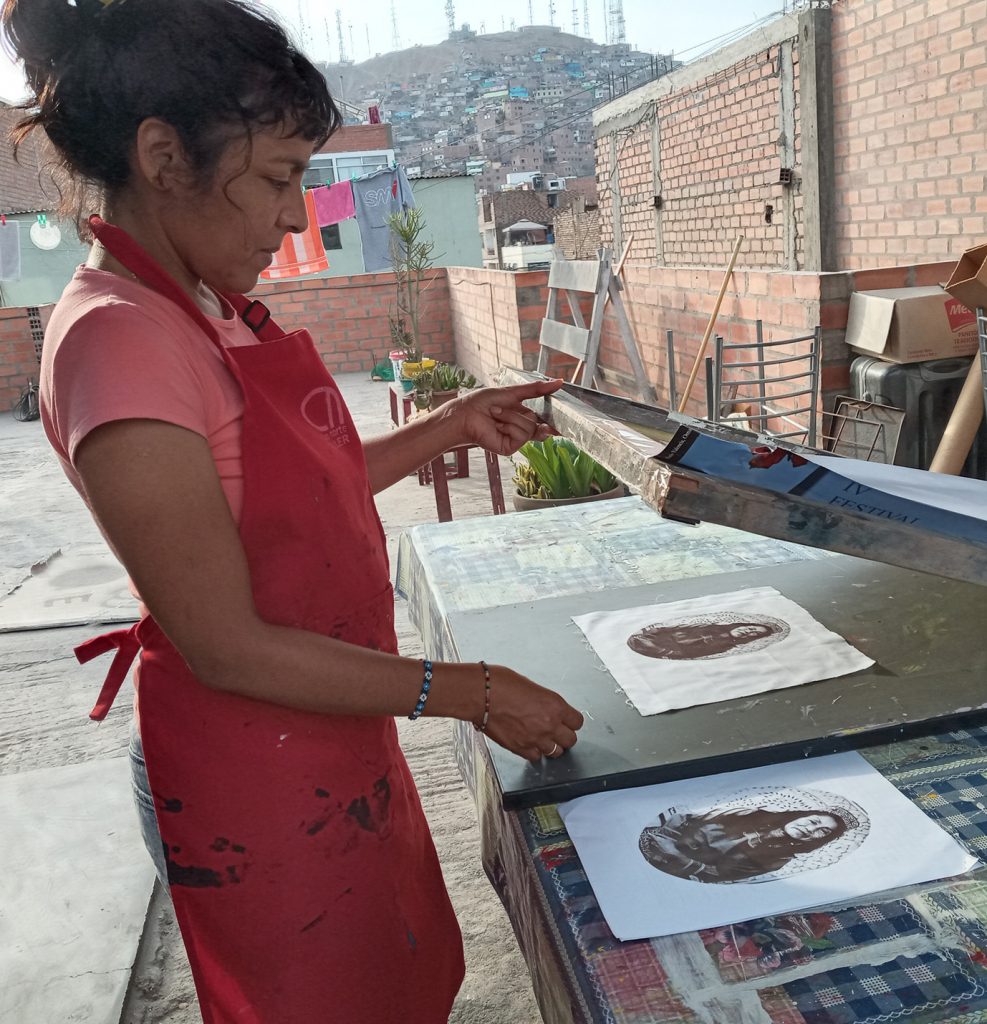
The embroidery technique I use is from the Mantaro Valley in central Peru. I didn’t learn this at the school of Bellas Artes, instead I took a course in the National Museum of Peruvian Culture. This was a place that I had been fascinated in all my life, since childhood. When I was small, we used to wait at the bus stop right outside the museum and I always gave it so much attention, but I never had the chance to visit. When I was an adult, I finally went to do a course there with Moisés Balbín Ordaya, where I learned all about the ancestral techniques and embroidery from the Mantaro Valley. It was such a wonderful experience and was so different from learning in school; you could really see the warmth that was transmitted when they were teaching, and I think this is because it’s a technique that is passed down through generations. Maybe this was not possible before, but in the last ten years at the school of Bellas Artes there was an anthropologist César Ramos who invited some traditional masters to share their techniques with urban artists, to create a kind of horizontal experience and produce a beautiful project.
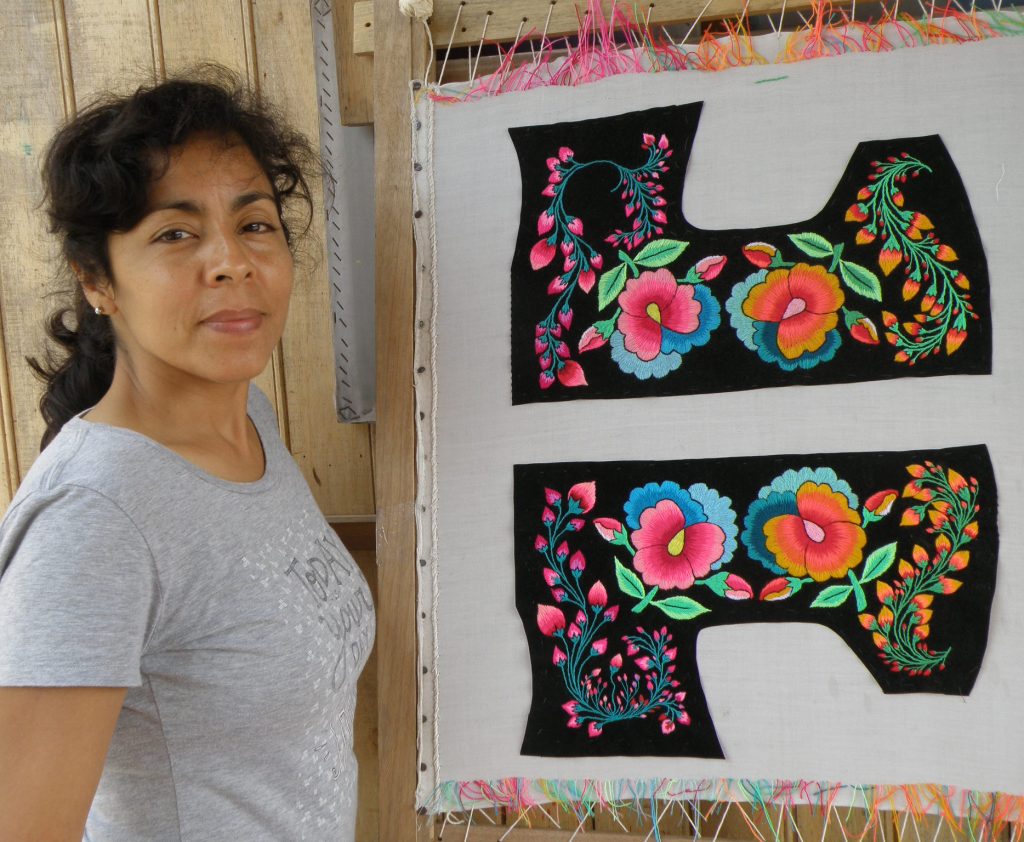
My focus on the daily lives of people in Urban Lima, and especially about food, started from an early discomfort that I had with the routine of life. One time, when I was still studying in the school of Bellas Artes, I was concentrating hard of my work when my father arrived from the market with food, telling me to leave everything to one side and go and cook. For me this was a big conflict for a long time, I felt so fed up, so I decided to include this in my work.
“To deal with this resentment about the interference of daily life I turned this into a possibility for creation, and that’s where my focus on daily realities began”.
So, then I took my camera and began to take note of all the basic things in my house and the kitchen- the chopping board, the food, the cooking…I registered all of this through my camera. This contact that I made with my own life allowed me to have greater contact with the lives of people on the street, with people in the marketplace. More and more I found a much richer perspective of life became illuminated. I love to speak with people on the street or the market, so much so that when I go shopping my husband accompanies me to just to stop me talking too long! I like to develop a warm relationship with people, and it is this approach that strengthens the perspectives that you see in the images I produce, like those of the cevichera.
It’s curious because the images in my work come naturally from the experiences I see, and by coincidence I have a lot of images of people eating ceviche because its ones of the most common things that people eat in the street. On any street corner you’ll find a cevichera, now in the pandemic its changed, but before it was a very typical image to see people eating in the street. I love these images because people go to eat in the street because they are working, and they don’t have any other option.
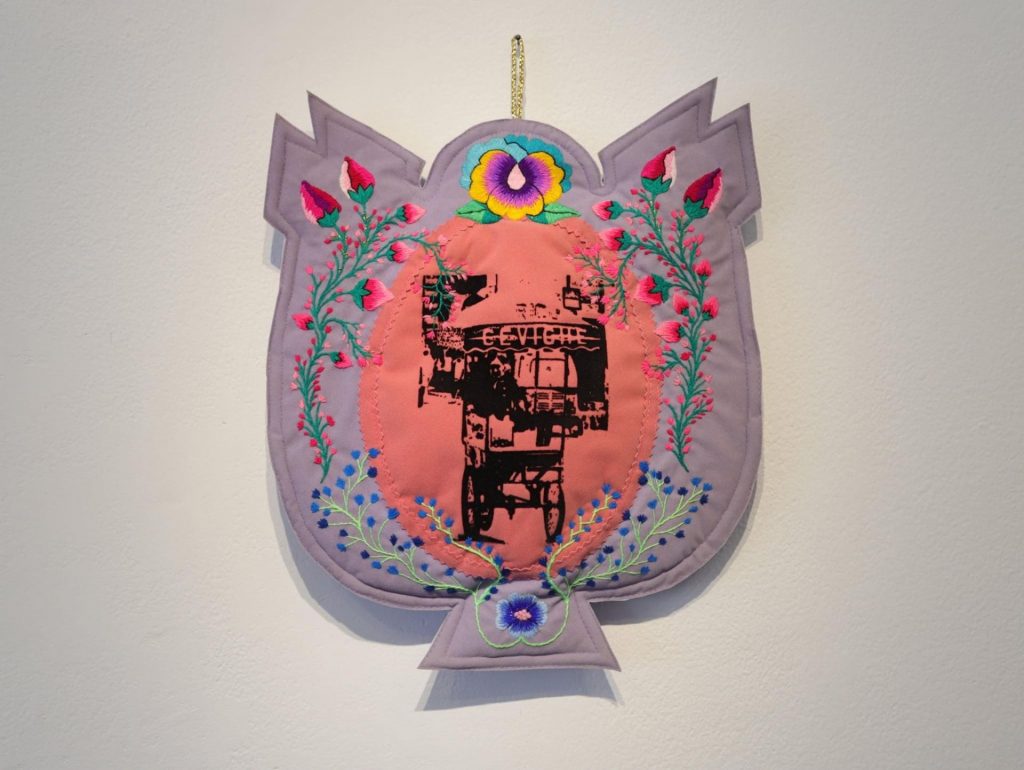
I took this particular image for the piece ‘Vendedora de Ceviche III’ (2020), with the woman and her cevichera trolley, in Lima Norte. This woman was just going about her day with her cevichera trolley, and I loved this image.
So, when I came to make my exhibition series ‘Escuderas: Identidad y nación’ (‘Coat of arms: identity and Nation’) I wanted to pay homage to this woman with her cevichera trolley and totally transform her, making her full of flowers in a portrait style and to give her a place of importance. Working in this traditional way completely transformed her.
I also have a piece called ‘Cevichito’, which shows some construction workers eating ceviche. I love this scene because I captured it in a large avenue when they were building a bypass and a mall at the same time, so two large constructions. In this space there was a lot of movement, and you couldn’t pass by easily. It was fascinating because in the middle of this busy, broken road there was this cevichera trolley with some construction men sat there eating…probably with dust in their ceviche!
All my photos are from lima, as it’s such a mix.; we have a rich variety from all the different places like the jungle, the mountains, the coast, and this makes new images and scenes. So, it is kind of inevitable that my artworks are inspired by these techniques from the Sierra.
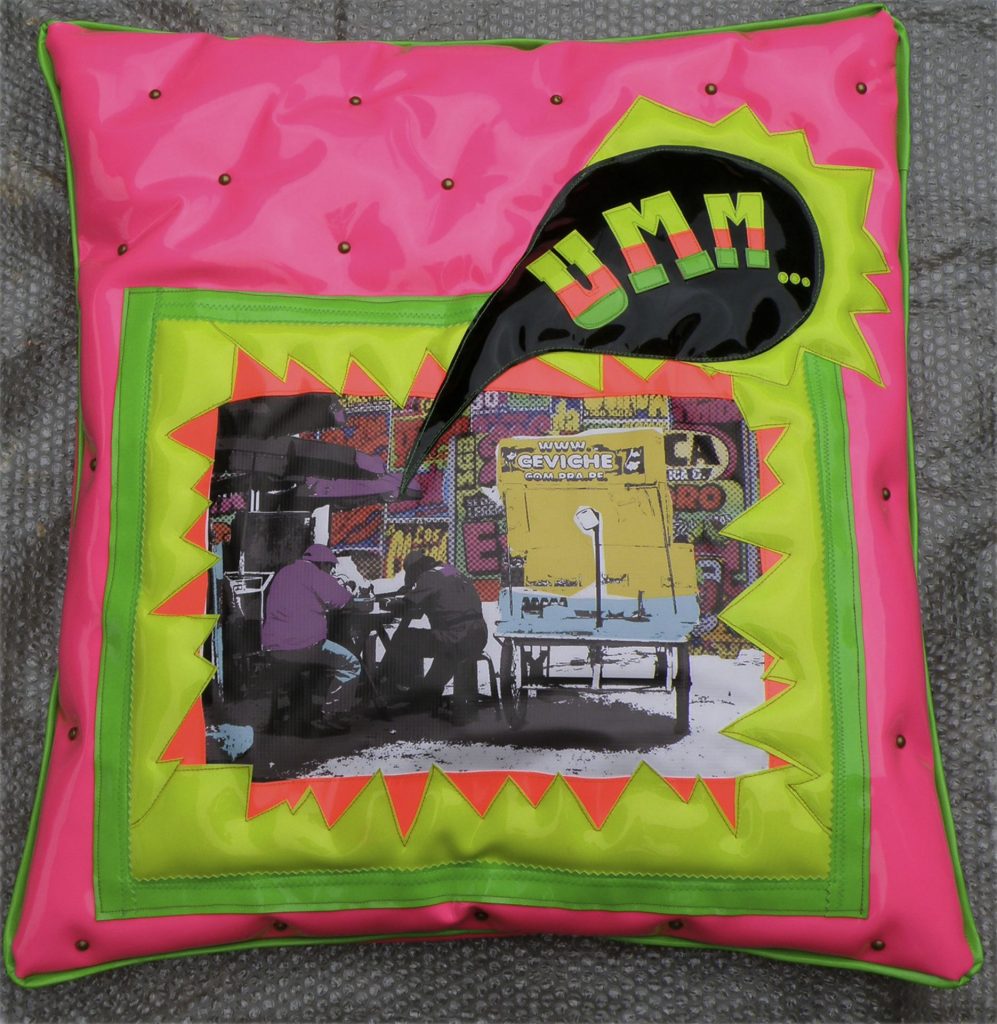
Liliana Avalos is represented by BLOC ART
https://liavalosarte.wixsite.com/lilianaavalos
Instagram: liliana.avalos.artista


